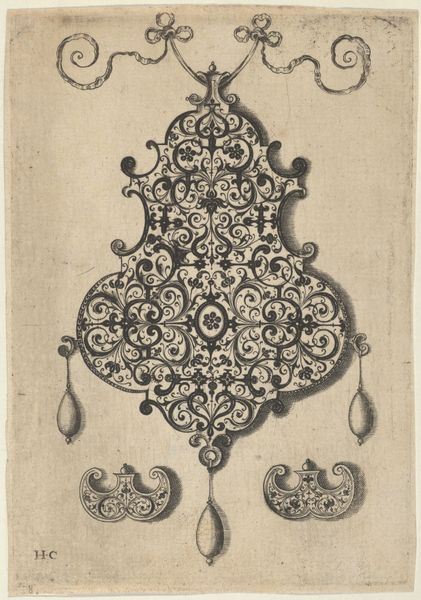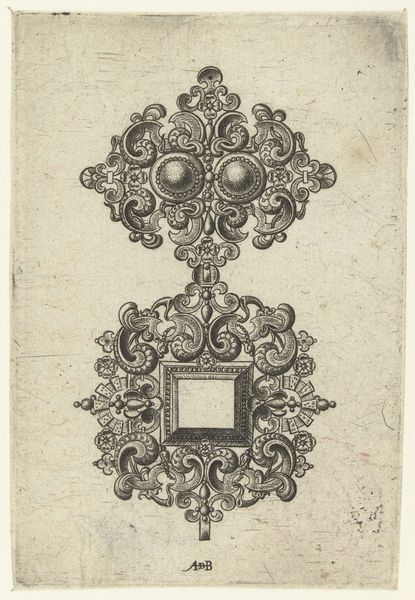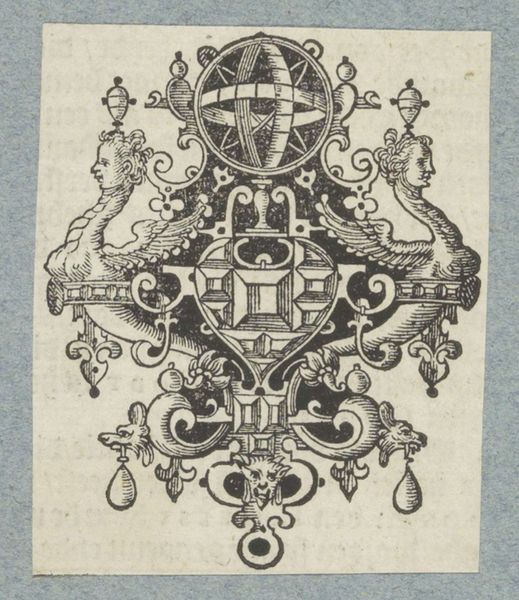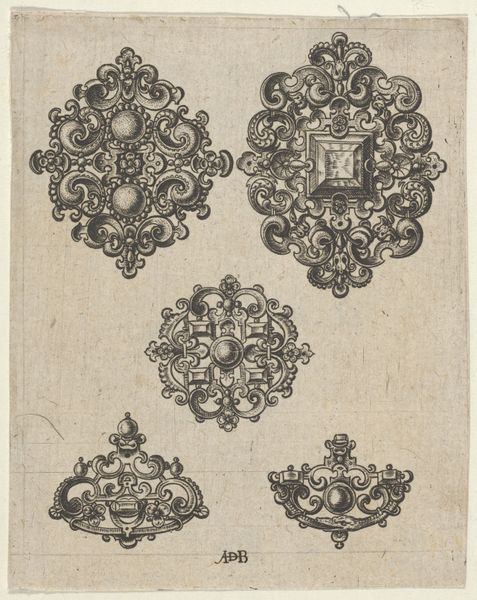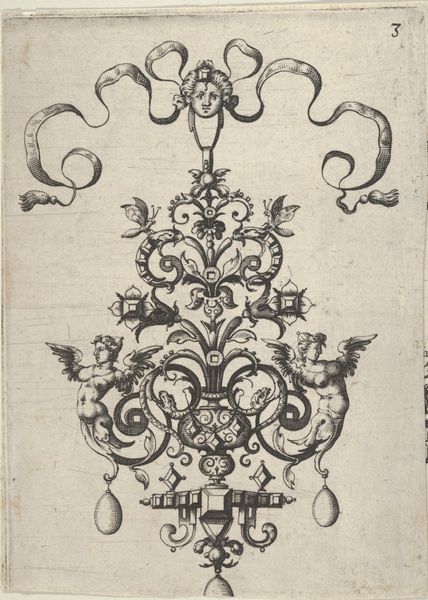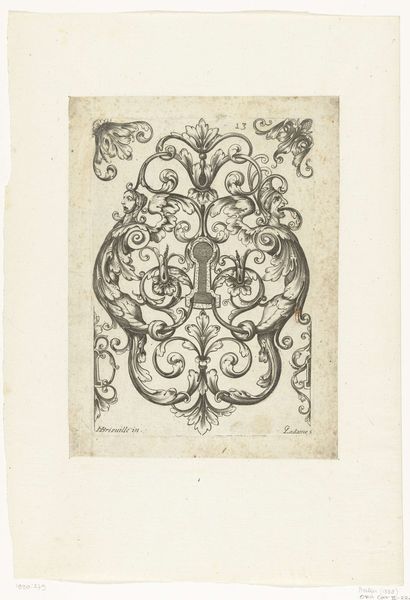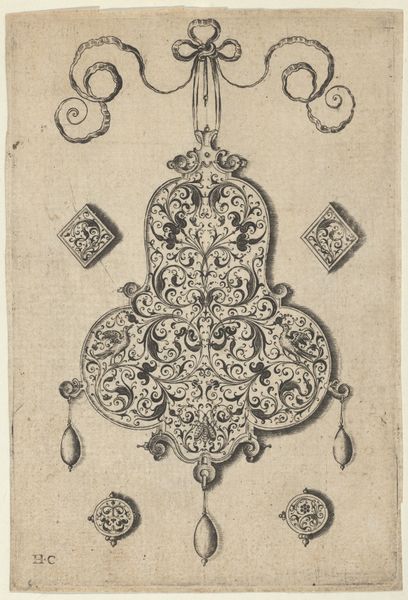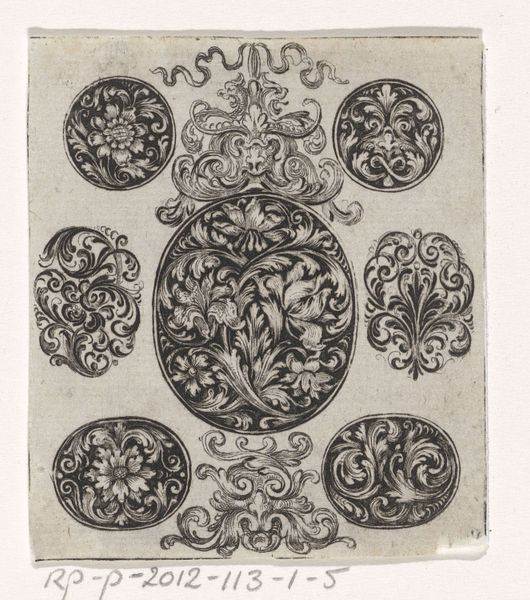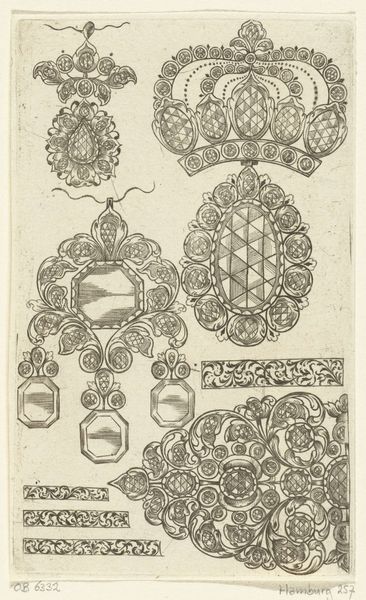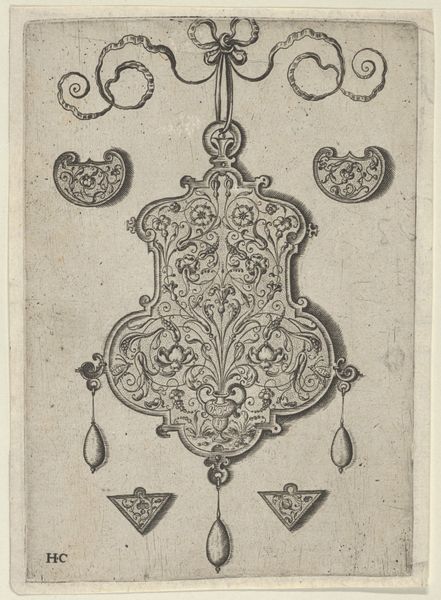
drawing, print, ink, engraving
#
drawing
#
pen drawing
# print
#
11_renaissance
#
ink
#
engraving
Dimensions: height 114 mm, width 81 mm
Copyright: Rijks Museum: Open Domain
Editor: This engraving from the late 16th century, titled "Hanger met drie rechthoekige stenen" by Abraham de Bruyn and currently held at the Rijksmuseum, feels like a blueprint for elaborate jewelry. The detailed pen and ink work makes it so intricate. How do you interpret this work? Curator: Beyond the clear skill in depicting potential jewelry, I think it’s important to consider the social and political context. This was a time of significant social stratification, where jewelry often served as a blatant display of power and wealth. Do you see this drawing as simply an aesthetic object, or perhaps something more indicative of the period's values? Editor: I see what you mean, the intricate details seem like a deliberate act to express a certain status. What’s the meaning behind all the detail, or how would this have been displayed by those who chose to adorn these pieces? Curator: Well, engravings like these circulated amongst artisans, offering design ideas and showcasing the latest styles favored by the elite. These weren't mere decorations, but rather wearable signifiers of allegiance, economic standing, and even cultural identity. Think about the symbolism: the precious stones, the meticulous craftsmanship – what stories were they meant to tell? Editor: The stones are not explicitly included but imagined inside the central voids. The rest includes figures from antiquity alongside what appear to be floral elements that are incredibly intricate. All for a single person! It makes one think, wouldn't it? Curator: Exactly! It speaks to the ways in which art, even in its most functional forms, reinforces and sometimes challenges the status quo. By examining these details, we gain a deeper understanding of the complex relationship between aesthetics, power, and identity during the Renaissance. Editor: Thanks, I now see this print as more than just decorative. It’s like a coded message about the social dynamics of the time. Curator: Precisely, art becomes a lens through which we can examine broader societal narratives and individual stories.
Comments
No comments
Be the first to comment and join the conversation on the ultimate creative platform.

